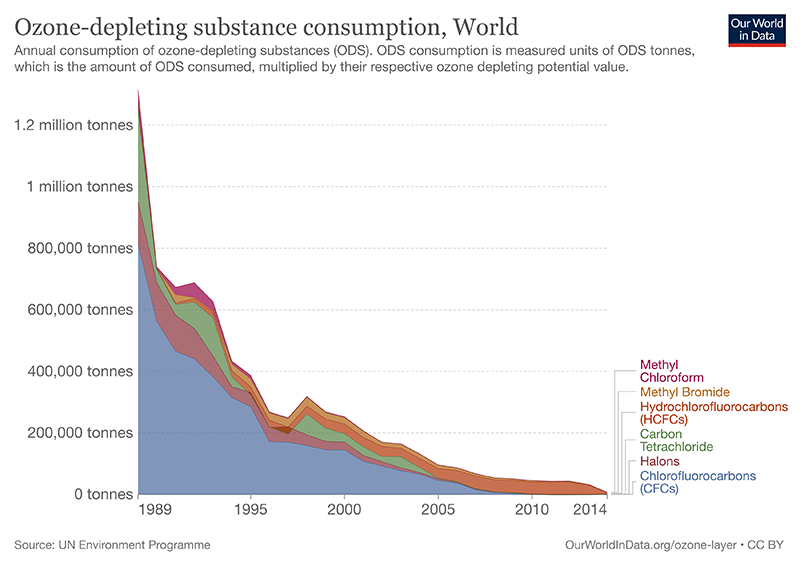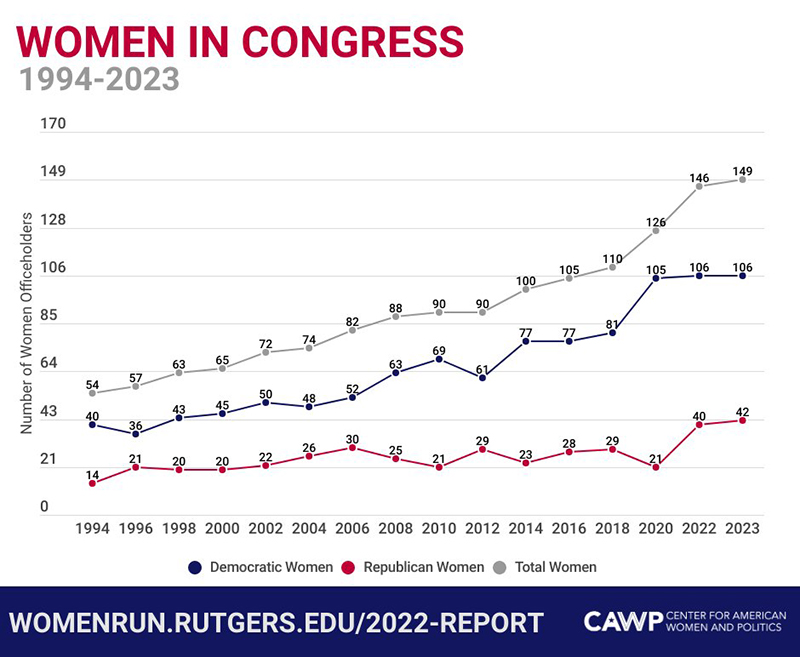Volcanoes are erupting in The Philippines, but on-fire Australia received some welcome rain. The Iran war cries have been called off and The Donald’s military powers are about to be hamstrung by the Senate. Meanwhile, his impeachment trial is starting, and we’re all on Twitter for a front-row seat.
What Could Go Right? The ozone layer bounces back
Full recovery predicted as early as 2035 for some parts of the world
This is our weekly newsletter, What Could Go Right? Sign up here to receive it in your inbox every Thursday at 6am ET. You can read past issues here.
The ozone layer bounces back
The public reaction to global environmental agreements is often crickets. They can, however, pay off—big time. So confirms the latest United Nations (UN) report on the ozone layer, which comes out every four years.
The thinning of the ozone layer exposes us to cancer- and cataract-causing ultraviolet rays from the sun, the result of ozone-eating chemicals that used to be common in various products, from hairsprays to refrigerators, being released into the air. Some of these chemicals also happen to be powerful greenhouse gases.
We first learned about the existence of the ozone layer in the 1930s, realized its depletion was a serious issue in the 70s, and finally did something about it on a global level in the 80s. (Those curious can watch that process unfold in this critique of the press coverage of that time.) The signing of the 1987 Montreal Protocol on Substances that Deplete the Ozone Layer set various controls on the most destructive of these chemicals, and we’ve been tracking the results of our efforts since.

There have been positive trends for many years now, but the release of the new UN report is a good time to catch ourselves up on what the models say when it comes to solving the issue. Models are dependent on several factors, so these dates are subject to change, but the report estimates that we’ll return the ozone layer to its 1980 condition by 2045 in the southern hemisphere and 2035 in the northern hemisphere. As for the literal hole in the ozone above Antarctica, estimates are that it will completely close sometime between 2049 and 2077.
Even the large media outlets are running this story as a win, which we are pleased to see. Certainly we can take from it a positive view of international cooperation as well as a keener excitement for the next time dry-sounding environmental agreements are inked.
The road hasn’t been totally smooth—just like with climate change, we wasted some years waffling about the science before taking global action. But also just like with climate change, there were pockets of movement much earlier than the Montreal Protocol that would eventually set the tone for success. On the state level, for instance, Oregon banned aerosol sprays in 1975, and United States federal entities followed up soon after.
Climate change is a bigger, deeper challenge than the ozone, to be sure, and we haven’t been met with success yet. We can take a look back in the past, though, and be driven by the knowledge that over time, concentrated efforts do pay off.
If you’re interested in a longer treatment of the history and science of fixing the ozone, as well as the notable individuals involved in getting the Montreal Protocol over the finish line, Kelsey Piper has the details here in Vox.
Before we go
Hats off to this useful and sweet idea. Jumbo supermarkets in the Netherlands introduced a “chat checkout,” where customers can have a conversation while they pay instead of rushing through the line. And we’ll give a second hat tip to Finland, where media literacy is part of the national curriculum from pre-school on, and students are being taught how to spot misinformation.
We’re trying to save civilization by saving the bees. American honeybees will be getting vaccinated for the first time against a bee-killing bacteria.
The TikTok version of our newsletter from last week on modern teens dropping classic teen vices like drinking and smoking went mega-viral. Join us on the Tok if you haven’t already, and a warm welcome to our new newsletter readers who found us through there.
Below in the links section, breakthrough technologies enter the new year, monarch butterflies abound in California, plans for the world’s first climate-neutral continent, and more.

Progress, Please
(Found good news? Tweet at us @progressntwrk or email.)
Other good stuff in the news 🦋
Energy & Environment:
- What’s next for batteries in 2023 | MIT Technology Review
- California county sees highest number of monarch butterflies in more than 20 years | Phys.org
- Electric planes sound like a fantasy but they may be the future for short-haul in Australia | The Guardian
- ‘Holy grail’ wheat gene discovery could feed our overheated world | The Guardian
- Are we entering the golden age of geothermal energy? | DW
- The green jobs boom is benefiting the people who need it most | Reasons to Be Cheerful
- US emissions rose in 2022. Here’s why that’s not as bad as it sounds. | Grist
Science & Tech:
- 10 breakthrough technologies heading into 2023 | MIT Technology Review
- A new app can detect if ChatGPT wrote an essay | Business Insider
- Cancer vaccine hunt makes progress, finally | The Washington Post
Politics & Policy:
- Nearly 200 countries approve a biodiversity accord enshrining human rights and the ‘rights of nature’ | Inside Climate News
- Europe’s plan to become the first climate-neutral continent | Wired
- Tobacco companies must pay for clean up of discarded cigarettes in Spain | Euronews
- New law: $35 insulin for seniors on Medicare | FOX 5 Atlanta
- Nearly 43,000 cannabis convictions expunged in Connecticut | Cannabis Now
- South Carolina Supreme Court strikes down state abortion ban | AP
- ‘We’re all on the same team’: Inside the Alaska model for US politics | The Christian Science Monitor
Public Health:
- Rapid tests for Covid, RSV and the flu are available in Europe. Why not in the US? | NBC News
- First African-produced cancer tests to slash costs and waiting times | The Guardian
- New antibody therapy works for 73% of multiple myeloma patients | Freethink
Society & Culture:
- Number of populist world leaders at 20-year low | The Guardian
- Sony has released a customizable accessibility controller kit for people with disabilities | PlayStation Blog
Economy:
- Inflation in the eurozone falls back to single digits as downward trend continues | Euronews
- The economy is improving in three major ways | The Atlantic
- December’s buoyant jobs numbers make a soft landing look plausible | Axios
TPN Member originals 🧠
(Who are our Members? Get to know them.)
- There was something positive in the speaker-vote debacle | James Fallows
- 2023 could be the year that exposes populism for the sham that it is | Fareed Zakaria
- Tabata Amaral on Brazil’s future | Yascha Mounk
- How and why irrationality takes hold, and what do to about it | Steven Pinker
- In defense of “The West Wing” | Matthew Yglesias
- How to slow down scientific progress | Jason Crawford
- Union organizing: How businesses should (and shouldn’t) respond | Roy E. Bahat
- How to stop doomscrolling in a chaotic news cycle | Emma Varvaloucas
Department of Ideas 💡
(A staff recommendation guaranteed to give your brain some food for thought.)
We have a “tripledemic.” Not of disease, but of fear. | The Free Press
Getting sick sometimes is the price of returning to normal. Dr. Vinay Prasad thinks it’s more than worth it.
Why we picked it: Don’t believe the hype. As Dr. Prasad writes and the evidence supports, “The way to think of the tripledemic is that it’s just another example of what we used to call normal life.” —Brian Leli
Until Next Time
What melts in your mouth, not in your hand, and may cause colored honey? 🐝👇


